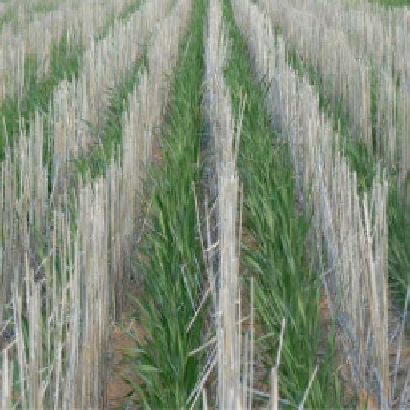Agriculture Reference
In-Depth Information
Fig. 8.11
Field sown with maize after maize without any previous cultivation by using row clean-
ers in front of the seeding units (
right
). The
insert
(
left
) shows a row cleaner for site-specific depth
control in front of a seeding unit (Courtesy of Yetter Mfg. Co. Inc., rearranged and altered)
Fig. 8.12
Inter-row sowing
of wheat after wheat. The
protection against soil erosion
is evident (Courtesy of
gps-Ag, Kangoroo Flat,
Australia)
Seeding into strips that are less loaded with residues can also be achieved by
inter-row sowing
.
This method relies on placing the seeds in furrows that are located
precisely between the stubble rows of the previous crop (Fig.
8.12
). A prerequisite
for this is that subsequent crops either have the same- or multiple row widths. Precise
seed placement is obtained by using machinery guidance via a global positioning
system with real-time kinematic corrections (RTK-GPS). The positioning control is
arranged in such a way that year after year the rows of the previous crop can be


